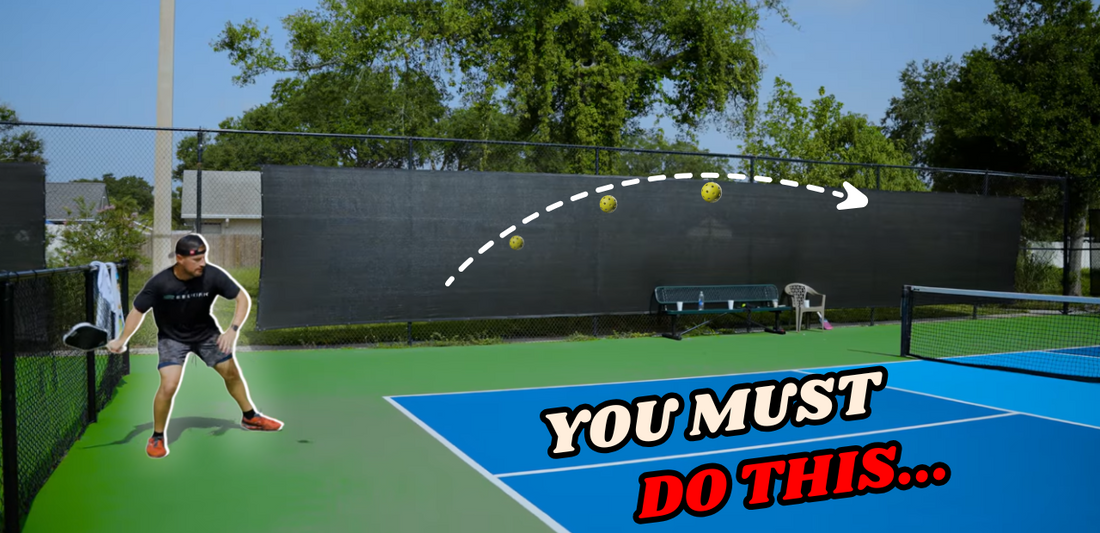Playing pickleball singles is a thrilling experience—fast-paced, intense, and a true test of your skills. With no partner to rely on, it’s just you, your paddle, and the court. But what sets winners apart? A solid understanding of the pickleball singles rules and the ability to outsmart your opponent.
In this blog, we’ll break down official singles rules and reveal pro-level strategies to help you dominate the pickleball game. Whether you're just starting out or looking to win your next tournament, this is your roadmap to becoming a singles threat.
Official Pickleball Singles Rules You Must Know

Before diving into strategies, make sure you're crystal clear on the pickleball rules that shape pickleball singles:
1. Service Rules for Singles
- Players serve diagonally into the opposite service area.
- Only one serve attempt is allowed (no second serve like in tennis).
- When serving, keep both feet behind the baseline.
- The serve must be underhand and contact the pickleball ball below waist level.
- Points can only be scored by the serving player.
2. Scoring System
- The most common rule is to play to 11 points, and win by two points.
- Only the server can score.
- The server switches sides after winning a point.
3. Double Bounce Rule
- The ball must bounce once on each side before volleys are allowed.
- This applies to singles as well as doubles.
4. No-Volley Zone (Kitchen)
- Players cannot volley (hit the ball in the air) while standing in the no-volley zone.
- You can enter the kitchen only after the ball has bounced inside it.
Knowing these pickleball rules ensures that your strategy is built on a strong foundation.
Game-Winning Singles Strategies for All Levels

Let’s dive into tactical tips you can use based on your skill level:
Beginner Strategies
- Serve Big and Deep: Aim deep serves near your opponent’s baseline. This forces them back, giving you more time to set up in the service area.
- Return Deep Too: Whether serving or receiving, depth is key. The deeper the shot, the harder the return.
- Stay Centered After Each Shot: Always recover to the center of the court (slightly behind the baseline). This gives you optimal coverage on pickleball courts.
- Limit Lobs Early On: Lobs are tricky in singles. Save them for advanced play or when your opponent is already up at the kitchen.
Intermediate Strategies
- Master the Passing Shot: When your opponent rushes the net, aim your shot past them. Down-the-line or cross-court passing shots are match-winners.
- Get to the Kitchen Fast (But Smartly): Use a well-placed third-shot drop to move forward. Controlling the kitchen gives you an edge in short rallies.
- Keep Your Strokes Compact: Avoid large backswings. In singles, a short and efficient stroke saves time and improves control.
- Move Your Feet: Footwork separates intermediate from advanced players. Stay light and ready to change direction.
Advanced Strategies
- Aggro-Dinking: Use aggressive dinks to pressure your opponent. Hit low, fast dinks to their feet or weak side to force errors.
- Hit Behind Opponents: A quick shift in direction can catch opponents off-guard. Aim behind them when they commit to one side.
- Use Opponent’s Momentum Against Them: If your opponent is rushing in one direction, counter with a shot to the other. It’s a mind game.
- Don’t Rush the Drop: Let your third-shot drops arc high if needed—better control means fewer errors.
-
Anticipate, Don’t React: Learn to read your opponent’s paddle and body language. Anticipation beats speed.
What Is Skinny Singles in Pickleball?

Skinny singles (or "mini-singles") is a fun twist where only half the court is used:
- Down the line: Both players use the same side of the court.
-
Cross-court: Players face diagonally, using opposing service areas.
This variation improves precision and is a great drill for practicing accuracy and court control in this racket sport.
Endurance Tips for Singles Players
Pickleball singles requires more stamina than doubles. Here’s how to train like a pro:
- Do HIIT Workouts: Pickleball is a stop-start game. Interval training mimics match intensity.
- Improve Cardio: Run, bike, or swim to build general endurance.
-
Practice Endurance Drills: Rally as long as possible with a partner or machine. Add footwork ladders and shadow drills.
These exercises improve your longevity and quickness on pickleball courts.
Equipment Matters
Use a lightweight but powerful pickleball paddle to stay fast and efficient. Look for one with a comfortable grip and responsive face. Our carbon fiber pickleball rackets at Strokess are trusted by players nationwide.
Also, choose a consistent pickleball ball and always play on quality courts to maintain consistency in your pickleball game.
Final Thoughts
Understanding pickleball singles rules is only step one. Applying high-level strategies with focus and confidence is what gets you the win.
Whether you’re just stepping into singles play or prepping for a tournament, combine your skills with smart tactics to edge out your opponents. For an even deeper dive into improving every aspect of your pickleball game, check out The Most Comprehensive Pickleball Game Guide.

